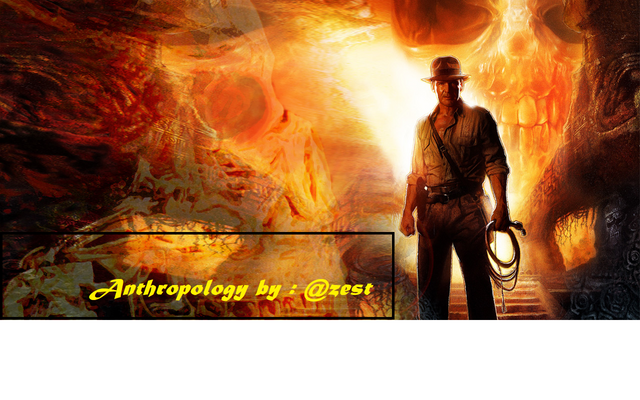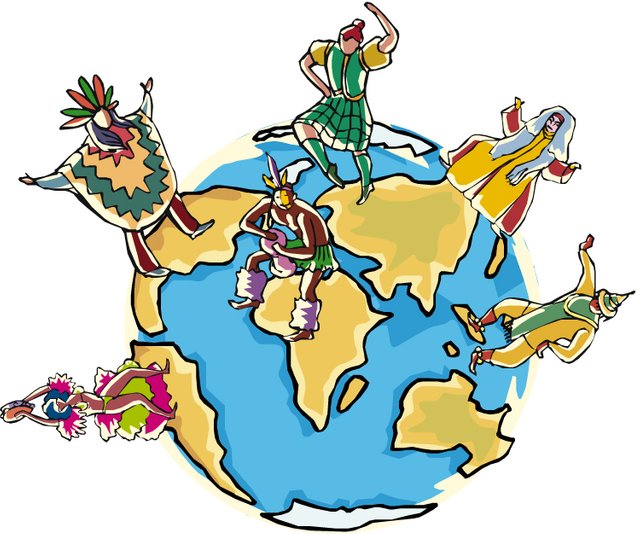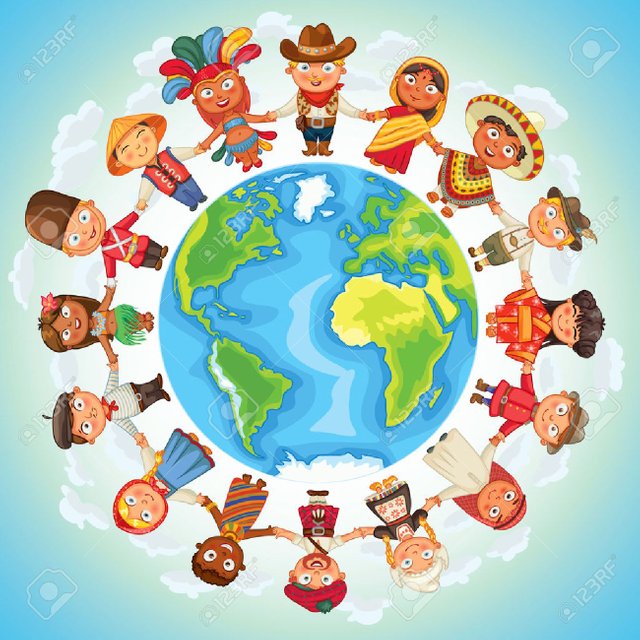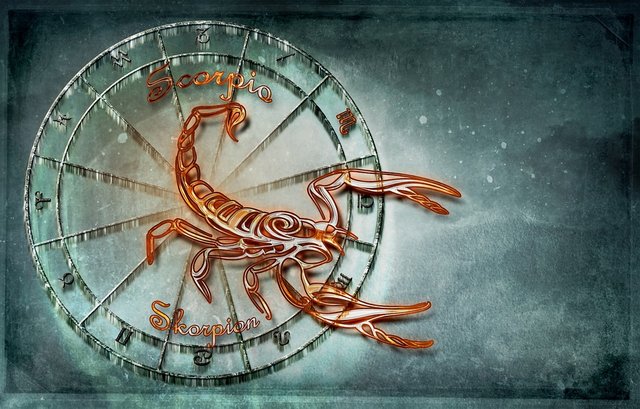Communication: Part 4 - Approaches to the study of symbolism
Communication: Part 4 - Approaches to the study of symbolism
Approaches to the study of symbolism
Introduction
Symbols are found in all aspects of culture, such as art, dance, music, architecture, facial expressions, gestures, body postures, ornaments, clothing, ritual, religion, kinship, nationality, space arrangements, material possessions and many more. Think, for example, religion, where the Christain cross, Islamic crescent, Jewish Star of David, or any other object of worship may bring to mind centuries of struggle and persecution, or may stand for a whole philosophy or creed. Everyday people communicate by means of symbols. No wonder, then, that the study of symbolism is so important to anthropologists. Symbolic anthropologists study the system of codes and messages received by people through their interaction with people and with the natural world.
There are, however, varying uses for and interpretations of the concepts of "symbols" and "symbolism" in anthropology, so that different approaches in the anthropological study of symbolism can be distinguished.These include the structuralist approach of Levi-Strauss, the "Interpretative Anthropology" of Geertz, and Turner's focus on symbols as part of the social process. Their anthropological approaches to symbolism will be discussed in this post.
What is meant by "Symbol"?
Let us first distinguish between signs and symbols. Scholars do not agree about the relationship between signs and symbols. Some follow CS Peirce in considering "sign" as the inclusive term, and "symbol" as one of three types of signs, the other two being the icon and the index. Pierce distinguishes symbols from the other types of signs on the basis that, in the case of symbols, the relationship between the signifier and what is signified is arbitrary. This means that the relationship is based on mere opinion or random choice there is no obvious connection between the symbol and what it represents. In contrast, in the cases of an icon and an index, there is a more direct or obvious connection. An example of an icon is a passport photograph, which merely represents the person whose photograph it is. An example of an index would be smoke rising from a chimney, where the smoke is an index of fire.
A symbol can be defined as an entity, action, verbal expression or concept to which the people who acknowledge it ascribe a particular value or meaning. All symbols are culturally determined. They provide the foundation for action and behaviour, and they operate in a sociocultural context.
This gives a symbol...its specific meaning, since a symbol...can have one meaning in one social context and another in a different context. The word father has one meaning within a kinship structure and a different one within the context of the Catholic religious structure - Applebaum (1987:480-481).
From the above quote, it is also apparent that symbols can have more than one meaning.
Turner (1967:19) views a symbol as:
a thing regarded by general consent as naturally typifying or representing or recalling something by possession of analogous qualities or by association in fact or thought.
He identified the following ritual symbols during his field research:
- objects
- activities
- relationships
- events
- gestures
- spatial units in a ritual situation
From this, we can deduce that Turner regarded symbolism essentially as the representation of one thing by another. For example, when a speaker of Northern Sotho dies, a protective stick called the lepheko is placed across the entrance of the hut in which the deceased is lying. This lepheko symbolises separation between the deceased and the community.
Characteristics of Symbols
Beattie (1964:70) identifies the following characteristics of symbols:
Like Turner, he believes that there is an underlying reason why a particular symbol is considered to be appropriate, even if this reason is not apparent to the people who use the symbol. The resemblance between the symbol and what is symbolised may be real or imagined, or may depend on some historical association in the society's past. For instance, a clan of the Nyoro of Uganda has a small bird as its Totem because of the belief that this bird saved the life of the founder of the clan by warning him of a charging buffalo.
Symbols do not merely refer to some event or entity. Instead, they usually represent or imply some abstract idea such as power or political authority. Symbols are important because they provide people with the means of representing abstract ideas that are difficult to indicate in other ways.
That which is symbolised is always an object of value. People usually feel strongly about their symbols, since the value attached to that which is symbolised is mostly transferred to the symbol itself (such as a flag or totem). This means that the symbol, and not the idea it represents, becomes the object of veneration. For instance, people have a high regard for their national flag, which is a symbol of their country and society.
Symbolism is a form of language and, like language, the main function of symbolism is communication. Just like language, a symbol must have the same meaning for people who acknowledge it if it is to be an effective means of communication, and if it is to evoke a specific response in the recipients.
Symbols are also regarded as stores of meaning, which serve to communicate meanings across generations. Among Christians, for example, the cross is such a symbol. The meaning of who have the knowledge to interpret it. Unless a person knows about the crucifixion and understands its significance, the cross itself would convey no meaning it would merely be an object with a certain shape.
The meanings of symbols are subject to change. New or sometimes conflicting meanings can render symbolic communication ambiguous and hamper interpretation. In the struggle for political power, for instance, the meanings of established symbols may be manipulated in order to obtain support.
Symbols in Cities
One area where symbols can be observed is in cities. Anthropologists have been lax in pursuing a study of symbols in the city, but a growing new field is urban symbolic ecology. This field of study tries to understand the cultural dimensions of cities, orientated towards establishing the distribution and meaning of symbols and rituals in relation to the cultivated surroundings.
In the iconic book The image of the city, Kevin Lynch (1960) argues that environmental images are established in a process between the observer and the environment. Just as a symbol is ascribed a meaning as discussed above so the city is imbued with meaning. These symbols then make the city legible, understandable to its residents and navigable.
An example of the symbolism of the city is the division between architecture, which is never stable, and nature, as a more permanent structure.
End of Part 4
Thank you for reading.
Images are linked to their sources in their description and references are stated below.
Authors and Text Titles
Kevin Lynch 1960: Image of the city
H Applebaum 1987: Introduction: symbolic and humanistic Anthropology
WA Haviland 2008: Anthropology: The Human Challenge 12th Edition
C Delaney 2004: Investigating Culture
Beattie, J 1964: Other cultures
FS Miller 1979: Introduction to cultural anthropology
VW Turner 1967: The forest of symbols: aspects of Ndembu ritual
Seymour-Smith 1986: Macmillan dictionary of anthropology
Haviland 2002: Cultural anthropology
C Geertz 1973: Interpretation of Culture
C Levi-Strauss 1977: Structural Anthropology vol 2
JJ Honigman 1976: The development of anthropological ideas
S Nanda & PL Warms 2004:Cultural Anthropology










You received a 10.0% upvote since you are not yet a member of geopolis.
To read more about us and what we do, click here.
https://steemit.com/geopolis/@geopolis/geopolis-the-community-for-global-sciences-update-3
If you do not want us to upvote and comment on your posts concerning earth and earth sciences, please reply stop to this comment and we will no longer bother you with our love ❤️
and symbols will continue to exist forever! it's really a part of as, everybody needs them and use them in their everyday lives and the best example for that is the Louvre that you mentioned or let's say Acropolis in Greece etc etc!
100 %
Thank you so much for the great comment and support:)
your welcome!
Wow . Great post. I think I will be using this post ( for extra readings) in my class about symbols and meaning . The exposition of the ideas and concepts is well expalined and the writing is so easy to follow .
Thank you!!!
Thank you for the comment and support:)
You certainly can, I assure you that all information can be tracked and verified:)
Great post! symbols are an integral part of societies and serve as an identity, just like the Eiffel tower makes you think of France and the statue of liberty makes you think of New York.
Hey @leczy!!!
I was actually going to use the Eiffel tower, but changed my mind and used the Louvre :)
Perfectly said!!!
Thank you for the comment and support:)
anytime, your posts are always on point
Interesting article! I was surprised, however, by the lack of mention of semiotics or the work of Roland Barthes, which I have found essential for the discussion of symbols, their relations to the signifer/signified, and how they relate to every society's various mythologies, be they spiritual or ideological.
Anda orang yang menarik. Terimakasih telah berbagi... Salam kenal untuk anda
Not sure, what you mean, sorry:)
Fantastic.
I was highly influenced by Levy-Strauss when I was studying Anthro at Uni many years ago, and his work still resonates and influences my own work.
I'd love to know more about Geertz and Turner in relation to Levy-Strauss.... any chance of a post comparing and contrasting the 3?
😉🙏🏽☯️
In this post , you can find more information about the three authors . https://steemit.com/anthropology/@zest/communication-part-3-anthropological-approaches-to-the-study-of-symbolism
Thank you:)
Thanks!!!! 😊🙏🏽☯️
Greet post and good contents @zest
Regards, @elhajary
Thanks @elhajary:)
Regards @zest
I am really amazed by this post. An excellent write up. Very informative and educative with a choice of words superb typical of a good writer. I enjoyed this piece thanks for sharing @zest. I will glad to perise your blog for more interesring articles as this
Thank you for the comment, an amazing 4 minutes to read the post:)
That is seriously impressive!!!
Nice post.... Symbols has been used to pass story along generations too
Yes, that is true, that will fall under Mythology:)
Thank you for the comment:)